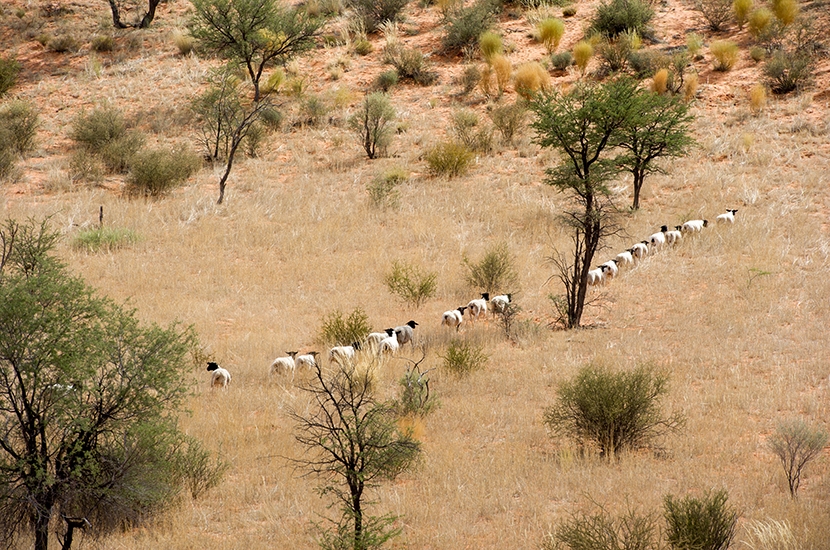Laikipia
In the past I had a low opinion of sheep. During my first forays into farming I saw them as creatures hell-bent on dying, with lung diseases, rotten feet or nasal maggots. Their legs snapped in ant-bear holes and hyenas tore them to pieces. To stem tides of oviform death we dipped, injected, dewormed and castrated. Many hours evaporated searching for stray animals. I found them dreary, sold off my flock and concentrated on cattle. Up here, north of Mount Kenya, people name their sons after special bulls and men hold important conversations in among the cattle at evening, so that the talk can be inspired in bold and manly ways. Everybody loves cattle.
Horatio the ram would stand by the bed, breathing snottily, his gaze drilling into you until you gave him a pat
Two years ago I got back into sheep. I bought fat-tailed hoggets from the Samburu pastoralists and a Dorper ram, whose sire had been flown up in a crate from the Karoo desert. In his youth, the ram, Horatio, would tail me into the kitchen and stand under the dining table along with the dogs and cats, begging for scraps. He’d stand next to the bed, or in the living room as we watched TV, breathing snottily, his gaze drilling into you until you gave him a pat and scratched his ears.
The company of animals is such a consolation for us that, along with dogs and cats, we have acquired a menagerie of creatures wandering in and out of the house. A Jersey bull named Halcyon used to browse the office library, nibbling paperbacks, until the evening he was eaten by a lion at the bottom of the garden. A geriatric cockerel named Brother, a one-eyed goose, a broken-legged calf named Long John, a lizard named Mr Skink and various others have lived with us.









Comments
Join the debate for just £1 a month
Be part of the conversation with other Spectator readers by getting your first three months for £3.
UNLOCK ACCESS Just £1 a monthAlready a subscriber? Log in